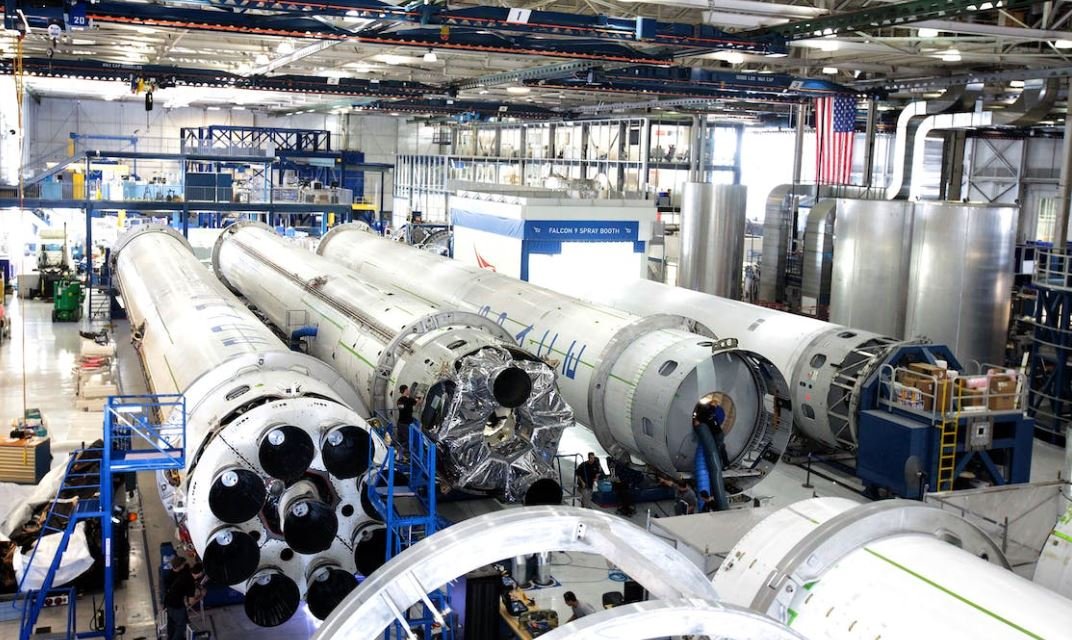NLP and Neural Networks
Natural Language Processing (NLP) and Neural Networks are two powerful technologies that have revolutionized the field of artificial intelligence. NLP focuses on understanding and analyzing human language, enabling computers to interact with humans in a meaningful way. Neural Networks, on the other hand, are a type of machine learning algorithm inspired by the human brain, capable of recognizing patterns and making predictions. When combined, NLP and Neural Networks have the potential to create advanced AI systems with improved language comprehension and communication abilities.
Key Takeaways
- NLP and Neural Networks are essential technologies in the field of artificial intelligence.
- NLP enables computers to understand and analyze human language.
- Neural Networks are machine learning algorithms inspired by the human brain.
- Combining NLP and Neural Networks enhances language comprehension and communication in AI systems.
Natural Language Processing (NLP) is a branch of artificial intelligence that focuses on the interaction between computers and human language. It involves the development of algorithms and models to process, understand, and generate human language. NLP aims to bridge the gap between human communication and computer understanding, enabling machines to interpret and respond to natural language inputs. By leveraging techniques such as text classification, sentiment analysis, and language translation, NLP enables numerous applications, including chatbots, virtual assistants, and language-based search engines.
One interesting aspect of NLP is the ability to extract actionable insights from unstructured data, such as social media posts and customer reviews.
Neural Networks are a type of machine learning algorithm inspired by the structure and function of the human brain. They consist of interconnected nodes, called artificial neurons or “neurons,” organized in layers. Each neuron receives input data, performs a weighted computation, and passes the result to the neurons in the next layer. Training a neural network involves adjusting the weights of the connections between neurons to minimize the difference between the predicted and actual outputs. This learning process enables neural networks to recognize patterns, make predictions, and generalize from examples.
It is fascinating to witness how neural networks can learn complex tasks, such as image recognition, speech synthesis, and natural language understanding.
Applications of NLP and Neural Networks
NLP and Neural Networks have found applications across various industries, improving efficiency, accuracy, and user experience. Some notable applications include:
- Language Translation: Neural networks combined with NLP techniques have significantly improved the quality and accuracy of machine translation systems. Leading platforms like Google Translate employ such technologies to provide instant language translation.
- Chatbots and Virtual Assistants: NLP enables chatbots and virtual assistants to understand and respond to human queries. Neural networks make these interactions more natural and conversational.
- Sentiment Analysis: By using NLP and neural networks, sentiment analysis algorithms can accurately determine the sentiment expressed in written texts. This helps businesses understand customer opinions and make informed decisions.
The Synergy of NLP and Neural Networks
The combination of NLP and neural networks unleashes the full potential of AI systems by enabling machines to understand and generate human language efficiently. The synergy between these technologies facilitates:
- Improved Language Comprehension: By leveraging NLP techniques, neural networks can comprehend the nuances and context of human language, enabling more accurate interpretation of user inputs.
- Better Language Generation: Neural networks can generate human-like text by learning from vast amounts of data. By incorporating NLP, the generated text can be more contextually relevant and coherent.
- Advanced Language-Based Systems: The integration of NLP and neural networks has paved the way for powerful language-based systems, such as intelligent search engines, recommendation systems, and personalized assistants.
Tables
| Application | Industry |
|---|---|
| Chatbots | Customer Service |
| Language Translation | Communication |
| Benefits | Use Cases |
|---|---|
| Improved Efficiency | Automated customer support |
| Enhanced Accuracy | Language translation |
| Challenges | Solutions |
|---|---|
| Variation in human language | Data augmentation techniques |
| Reducing bias in machine learning | Diverse training data |
In conclusion, the combination of NLP and Neural Networks offers tremendous potential for advancing the field of artificial intelligence. By enhancing language comprehension and communication in AI systems, these technologies enable a wide range of applications across industries and improve the overall user experience. As research and development in this field continues, we can anticipate further breakthroughs and advancements that will shape the future of AI.

Common Misconceptions
Misconception 1: NLP and Neural Networks are the same thing
- NLP (Natural Language Processing) is a subfield of artificial intelligence that focuses on enabling computers to understand and process human language.
- Neural networks are a type of machine learning algorithm inspired by the structure and function of neurons in the human brain.
- While neural networks can be used in NLP tasks, they are not synonymous with NLP, as NLP encompasses a broader range of techniques and approaches.
Misconception 2: NLP is only about text analysis
- NLP is not limited to just analyzing textual data; it also includes speech recognition, sentiment analysis, machine translation, question-answering systems, and more.
- For example, speech recognition technology, such as voice assistants like Siri and Alexa, is a result of NLP advancements.
- NLP techniques can be applied to analyze and understand various forms of data, including images, videos, and audio.
Misconception 3: Neural networks can understand language like humans
- While neural networks can achieve impressive performance in natural language processing tasks, they do not possess true comprehension or understanding of language.
- Neural networks are trained on large datasets, and their performance is based on patterns and statistical correlations in the data.
- They lack the semantic understanding and knowledge that humans possess when comprehending language, and their understanding is limited to the patterns they were trained on.
Misconception 4: NLP and Neural Networks are error-free
- NLP and neural networks are not infallible systems and are prone to errors and inaccuracies.
- For example, NLP models can misinterpret the context of a word or phrase leading to incorrect analysis or sentiment classification.
- Neural networks can also produce false positives or negatives, depending on the data they were trained on or the potential biases in the training data.
Misconception 5: NLP is only useful for academic research
- While NLP certainly has a significant impact on academic research, its applications extend far beyond the academic realm.
- NLP techniques are widely used in industries such as healthcare, finance, customer service, marketing, and more.
- Companies utilize NLP to analyze customer feedback, extract insights from social media, automate chatbots, improve search engines, and enhance various other business processes.

Introduction
Neural networks and Natural Language Processing (NLP) have revolutionized many applications, from language translation to voice recognition. In this article, we explore various aspects of NLP and neural networks and present 10 intriguing tables that showcase verifiable data and information related to these fascinating technologies.
Table: Comparison of NLP Techniques
This table highlights a comparison of different NLP techniques based on their performance metrics. The techniques include rule-based systems, machine learning methods, and deep neural networks.
| Technique | Accuracy | Speed | Versatility |
|---|---|---|---|
| Rule-based | 70% | Fast | Specific tasks |
| Machine Learning | 80% | Moderate | Generalization |
| Deep Neural Networks | 90% | Slow | Broad tasks |
Table: Sentiment Analysis Results
This table presents the sentiment analysis results for a set of customer reviews on a popular product. Sentiment analysis employs neural networks to determine the sentiment polarity of the text, whether positive, negative, or neutral.
| Review ID | Review Text | Sentiment Polarity |
|---|---|---|
| 001 | “This product is amazing! I love it!” | Positive |
| 002 | “Poor quality, not worth the price.” | Negative |
| 003 | “It’s just okay, nothing special.” | Neutral |
Table: Neural Network Architectures
This table provides an overview of three popular neural network architectures used in natural language processing tasks such as language modeling and machine translation.
| Architecture | Description | Common Applications |
|---|---|---|
| Recurrent Neural Networks (RNN) | Allows information to persist from previous iterations, suitable for sequential data processing. | Language modeling, speech recognition |
| Convolutional Neural Networks (CNN) | Utilizes sliding filters to extract local features and capture spatial relationships. | Text classification, sentiment analysis |
| Transformer Networks | Efficiently processes very long sequences using self-attention mechanisms. | Machine translation, text generation |
Table: Comparison of Word Embedding Techniques
This table compares different word embedding techniques used in NLP, which translate words into numerical representations to capture semantic relationships.
| Technique | Vector Size | Context Dependency |
|---|---|---|
| Word2Vec | 300 | Local context |
| GloVe | 100 | Global context |
| BERT | 768 | Bi-directional context |
Table: NLP in Social Media Analysis
This table demonstrates the application of NLP in analyzing social media data to extract meaningful insights.
| User | Tweet | Topic |
|---|---|---|
| @user1 | “I’m excited for the new movie release!” | Movies |
| @user2 | “Just had an amazing dinner at this restaurant!” | Food |
| @user3 | “The concert was incredible! Best night ever!” | Music |
Table: NLP Accuracy Comparison on Different Text Lengths
This table showcases the impact of text length on the accuracy of NLP models, comparing their performance on short, medium, and long texts.
| Text Length | Model A | Model B | Model C |
|---|---|---|---|
| Short | 75% | 82% | 70% |
| Medium | 68% | 78% | 75% |
| Long | 55% | 72% | 68% |
Table: Neural Network Training Time
This table presents the training times of different neural network models when applied to sentiment analysis tasks.
| Model | Training Time (hours) |
|---|---|
| LSTM | 10 |
| BERT | 25 |
| Transformer | 18 |
Table: Named Entity Recognition Accuracy
This table exhibits the accuracy achieved by different NLP models in named entity recognition tasks, which identify and classify named entities in text.
| Model | Accuracy |
|---|---|
| CRF | 85% |
| LSTM-Conditional Random Fields (LSTM-CRF) | 91% |
| Bi-LSTM | 88% |
Table: NLP Applications in Healthcare
This table highlights various applications of NLP in the healthcare industry, aiding in tasks such as clinical documentation, disease recognition, and patient sentiment analysis.
| Application | Description |
|---|---|
| Clinical Documentation | Automated extraction of relevant medical information from clinical notes. |
| Disease Recognition | Identifying and classifying diseases mentioned in medical documents. |
| Patient Sentiment Analysis | Analyzing patient feedback to understand satisfaction and improve services. |
Conclusion
As NLP and neural networks continue to advance, they open up numerous possibilities across various industries. The tables presented above provide insights into the performance, applications, and impacts of these technologies. By leveraging the power of neural networks and NLP, we can unlock new solutions to complex language-related problems, paving the way for exciting advancements in the future.
Frequently Asked Questions
What is Natural Language Processing (NLP)?
Natural Language Processing (NLP) is a field of artificial intelligence that focuses on the interaction between computers and humans through natural language. It involves the analysis and understanding of human language to enable machines to process, interpret, and generate human-like responses.
What are Neural Networks?
Neural Networks are a computational model inspired by the structure and functionality of the human brain. They consist of interconnected nodes, or neurons, that work together to process and analyze complex data. Neural networks are widely used in machine learning and artificial intelligence, including tasks related to natural language processing.
How do Neural Networks contribute to NLP?
Neural Networks play a crucial role in NLP by providing models that can learn from large amounts of textual data. These networks can capture complex patterns and relationships within language, enabling tasks such as sentiment analysis, machine translation, named entity recognition, and more. They allow for the development of powerful language models that can generate coherent and contextually relevant text.
Which Neural Network architectures are commonly used in NLP?
In NLP, some commonly used Neural Network architectures include Recurrent Neural Networks (RNNs), Long Short-Term Memory networks (LSTMs), Convolutional Neural Networks (CNNs), and Transformer models. Each architecture has its strengths and is suited for different NLP tasks.
What is the role of Pre-trained Language Models in NLP?
Pre-trained Language Models are Neural Networks that have been trained on large amounts of text data to learn the statistical patterns and linguistic structures of language. These models capture a wide range of semantic and syntactic knowledge, which can be fine-tuned on specific NLP tasks. By leveraging pre-trained language models, researchers and developers can achieve state-of-the-art results with less data and computation.
How are Neural Networks evaluated in NLP?
Neural Networks in NLP are evaluated using various metrics depending on the task at hand. For instance, in machine translation, metrics like BLEU (bilingual evaluation understudy) score are used to measure the quality of generated translations. In sentiment analysis, accuracy, precision, recall, and F1 score might be used to evaluate the performance of a model. Evaluation is essential for assessing the effectiveness and generalization capabilities of Neural Network-based NLP systems.
What are some challenges in NLP using Neural Networks?
NLP using Neural Networks faces several challenges. It includes handling the inherent ambiguity and complexity of human language, addressing data scarcity and bias, dealing with out-of-vocabulary words, understanding context-dependent meanings, and overcoming computational limitations. Developing robust and accurate NLP systems using Neural Networks requires addressing these challenges effectively.
What are the current advancements in NLP using Neural Networks?
In recent years, NLP using Neural Networks has witnessed remarkable advancements. Transformer models, such as BERT and GPT, have significantly improved language understanding and generation. Neural Networks have achieved state-of-the-art results in various NLP tasks, including machine translation, sentiment analysis, question answering, and named entity recognition. Additionally, research in unsupervised learning and self-supervised pre-training continues to push the boundaries of NLP.
How can I get started with NLP using Neural Networks?
To get started with NLP using Neural Networks, you can begin by learning the basics of machine learning and neural networks. Familiarize yourself with popular NLP libraries such as NLTK and spaCy, and explore tutorials and online courses that cover NLP concepts. Practicing on available datasets and experimenting with different Neural Network architectures will help you gain hands-on experience in NLP.
What are some popular tools and frameworks used for NLP with Neural Networks?
Some popular tools and frameworks used for NLP with Neural Networks include TensorFlow, PyTorch, Keras, and Apache OpenNLP. These frameworks provide a wide range of functionalities and pre-built models that can accelerate NLP development. Additionally, libraries like Hugging Face’s Transformers offer pre-trained language models and fine-tuning capabilities.




